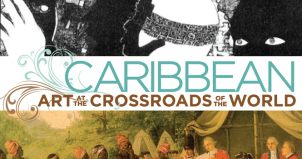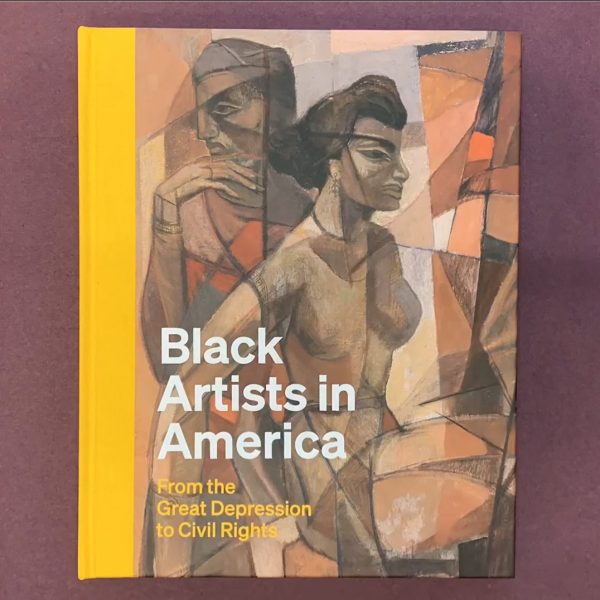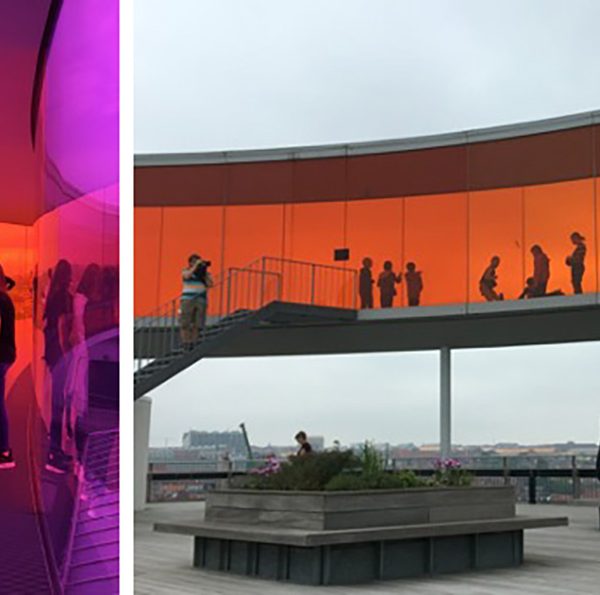Caribbean Art
When flipping through Caribbean: Art at the Crossroads, the reader will encounter Arnaldo Roche Rabell’s We Have to Dream in Blue. The image is arresting: a dark figure in jungle covering appears from the brush, watching with bright, blue eyes. Whether man or woman; European, African, or Caribbean indigent; the uncommonly mixed traits make clear catalog’s title.
 The catalog represents the collaboration of El Museo del Barrio, The Studio Museum in Harlem and the Queens Museum of Art, who put on a multi-venue exhibition last year examining Caribbean visual culture. Although the exhibition has closed, the catalog itself deserves attention. Caribbean: Art at the Crossroads of the World, edited by Deborah Cullen and Elvis Fuentes, features 500 color illustrations of artwork from the three venues and essays by leading scholars traces more than two hundred years of Caribbean and diasporic visual culture from the Haitian Revolution to the present, showing the evolution of art alongside changes in the modernizing, globalizing world. It covers such topics as the interconnections between Caribbean artistic production to its colonial contexts; between various generations of artists; and between the so-called high and low arts and religion, music, and carnival celebrations.
The catalog represents the collaboration of El Museo del Barrio, The Studio Museum in Harlem and the Queens Museum of Art, who put on a multi-venue exhibition last year examining Caribbean visual culture. Although the exhibition has closed, the catalog itself deserves attention. Caribbean: Art at the Crossroads of the World, edited by Deborah Cullen and Elvis Fuentes, features 500 color illustrations of artwork from the three venues and essays by leading scholars traces more than two hundred years of Caribbean and diasporic visual culture from the Haitian Revolution to the present, showing the evolution of art alongside changes in the modernizing, globalizing world. It covers such topics as the interconnections between Caribbean artistic production to its colonial contexts; between various generations of artists; and between the so-called high and low arts and religion, music, and carnival celebrations.
Although scholarly attention and many museum exhibitions and have been devoted to Caribbean art, this is the first project that examines “the visual culture about the Caribbean that has served to define it, for better or worse in or imaginations.” The catalog examines Caribbean visual culture about the Caribbean, acknowledging Caribbean’s art debt to Western artistic styles while primarily aiming to illuminate the elements of both regional and cosmopolitan traditions as they shaped a distinctive style. In other words, it chronicles the emergence of a uniquely Caribbean identity from the standpoint of Caribbean art.
The catalog celebrates the diversity of perspectives contained within Caribbean art. Early Caribbean art combines the perspectives of Caribbean agricultural and industrial trade characteristic of the region, with the perspectives of artists and intellectuals who emphasized the unique national characters of the peoples belonging to the Caribbean. The confluence of perspective produces a powerful juxtaposition of identity and art. The style is distinctly Western—the catalog includes landscape drawings by Pissarro and Gauguin—yet profoundly tropical settings offset the “normal” Western mode of activity, merging nature and urbanization; savagery and civilization; and mainstream and indigenous influences, a world where the centrality of trade and busyness meets leisure and repose. Its mood is unique, with both harmony and discord presented by the wide range of compositions and the forced unity of vastly different worlds.
Contemporary artists, such as Venezuelan artists Yeni and Nan, continue to pursue questions of Caribbean identity, history, and culture through performance art. They stand along the coasts and photograph themselves: in relation to themselves and their surroundings. Their features are notably concealed in each shot. Their draping hairs and nudity are most striking at first, but quickly, their primal poses and crouched bodies on blocks of ice on the coastline evoke more difficult questions about self-representation, growth, even pain.
Caribbean: Art at the Crossroads is published by El Museo del Barrio, New York, in association with Yale University Press. You can learn more at CaribbeanCrossroads.org.


























